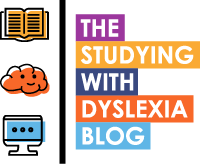Educating learners with dyslexia is something that schools are coming to terms with in ensuring that our dyslexic learners can be given the best opportunity to reach their potential academically.
In classrooms and lecture halls around the country, access to print via digitisation is increasing with the use of screen readers for students that experience challenges when reading text.
But what about exam access arrangements?
In recent years students with dyslexia have been given more time to complete an exam. They often have access to a laptop in order to write material and in many cases people are employed to read out exam questions on a one to one basis with the student completing the exam.
Having someone there in an exam session to read out an exam paper is great. The exam reader can repeat questions and this allows the student to feel more confident that they are accessing the right information in order to complete the exam. However there are downsides. It is possible that the student may feel uncomfortable with having a stranger sitting with them through an exam and so their conduct in the exam might affect their performance. Having a 'human' reader is also expensive as they need to be paid by the hour to be available. On this basis hiring a reader could cost upwards of £40 per hour. In a two hour exam with ten students requiring a human reader, that exam could cost the school £800 for just one exam subject.
_________________________________________________________________________________
 |
| FREE Conference, Leek, Staffordshire , 7th July 2016 - Click for more information. |
So what are the alternatives?
Depending upon the print disability of the student, there are lots of assistive technology products that can help the student to access text without the need for a human reader.
One school in Cambridgeshire recently used a screen reader with ten students in their GCSE exams. When submitting feedback the school reported that 9 students preferred to read out text using a screen reader versus having a person sat with them. The school was happy as this saved a lot of money and the purchase of the software over time would work out to be so much cheaper than using human readers.
What are the guidelines for using a screen reader?
This is important to consider. When using a screen reader, this should be done with the intention to enable a student be able to complete the exam without giving them an added advantage over that of their peers. A lot of screen readers have spell checking, dictionaries and word prediction tools which should be switched off and password protected so that the student cannot gain an unfair advantage.
But there are more guidelines that must be thought about and these are usefully summarised in a document published by the UK Association For Accessible Formats, click their logo below to download their guidelines.
 |
| Click here to download the UKAAF guidelines on accessing exams. |
Increasingly educational establishments are looking to move towards using screen readers to fulfill exams access requirements. There are plenty of solutions out there that can fulfill the role of reading out exams but can they meet the criteria required?
What are your experiences of using a screen reader in exam settings?
Do you have strong opinions on this subject?
Do you think that educational establishments should use human readers.
Please leave your comments below and let me know what you think.

